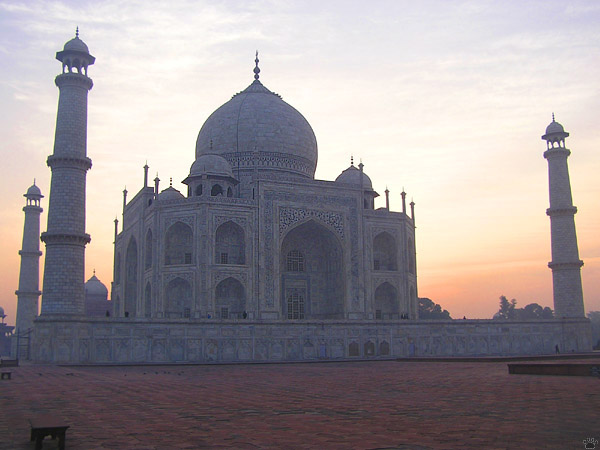
Taj Mahal, Agra.
Part 5. Agra
Taj Mahal in Agra is often called the most beautiful building in the world. I like it a lot, too - sorry if there are too many photos of it on this page. Taj Mahal was built by Mughal emperor Shah Jahan in 1631-1653 as a memorial to his second wife, Mumtaz Mahal, who died giving birth to their 14th child.
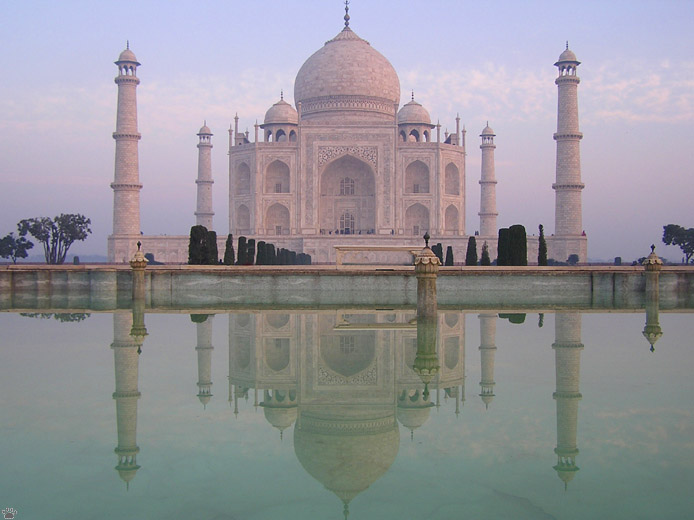
Dawn at Taj Mahal.
|
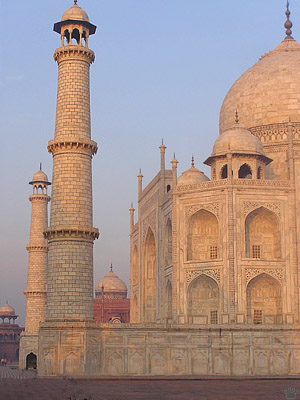
Taj Mahal. |
Described by guidebooks as a monument to eternal love, Taj is much more than that: it is full of hidden Sufi symbolism. The garden (called Taj Ganj) serves as a model of Heaven on Earth, with the tomb being the replica of Allah's throne. |
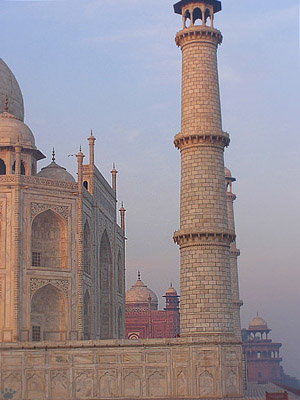
Taj Mahal. |
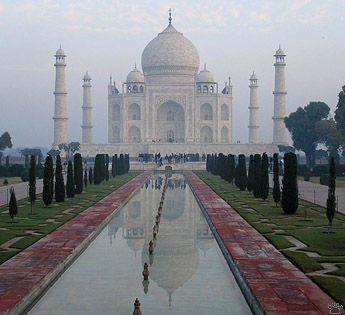 |
 |
| Taj Mahal. |
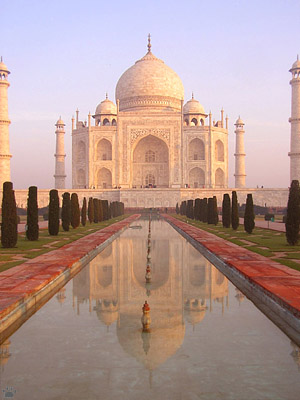
Taj Mahal. |
The changing colors of the building represent the constantly evolving world around it. For any good Muslim, all this is a horrible blasphemy and heresy. Whatever the ideology, Taj is a wonderful sight, especially at sunrise or sunset. |
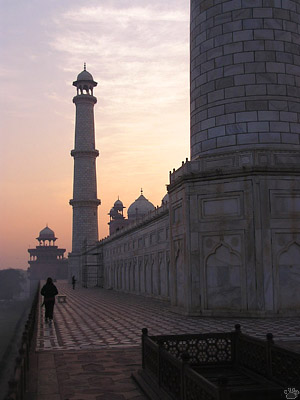
Dawn at Taj Mahal. |
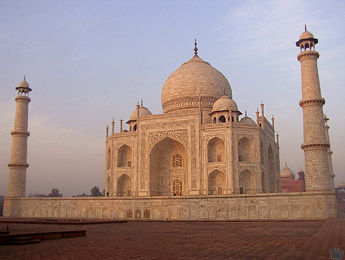 |
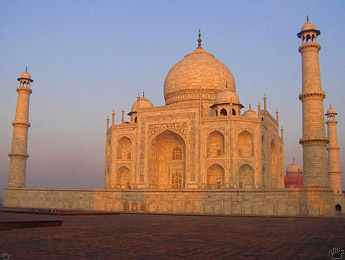 |
| Sunrise at Taj Mahal. |
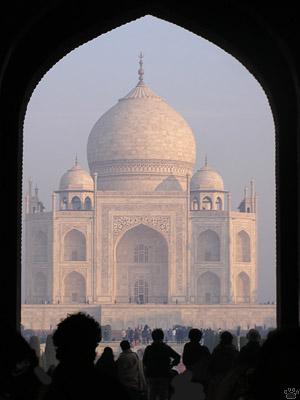
Taj Mahal. |
You can hear many other legends about Taj Mahal: that it was built by European architects, that the British were planning to demolish it, that a black "second Taj" was supposed to be built across the river from it, and so on. None of this is true. |
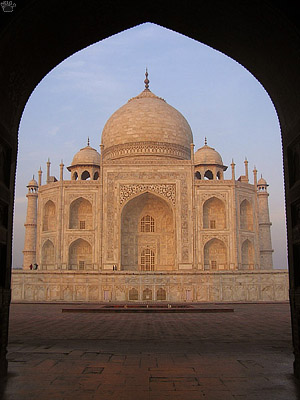
Taj Mahal. |
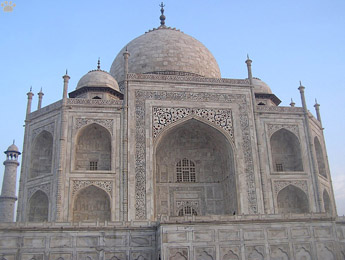
Taj Mahal. |
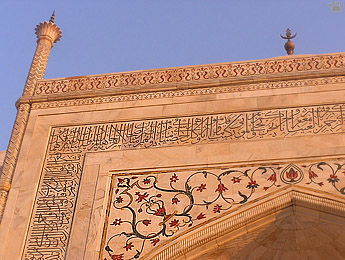
Taj Mahal up close. |
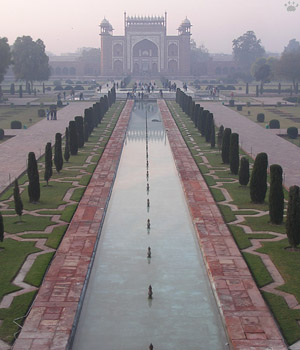
View from Taj Mahal. |
The tomb is decorated with marble carvings and precious stones, but the interior is not particularly impressive. More interesting are three gates and a mosque nearby, built of red sandstone. |

Inside Taj Mahal. |
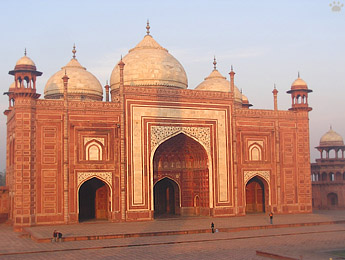
The mosque at Taj Ganj. |
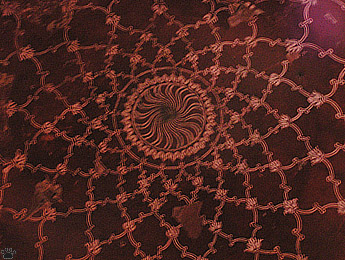
Ceiling of Jawab, Taj Ganj. |
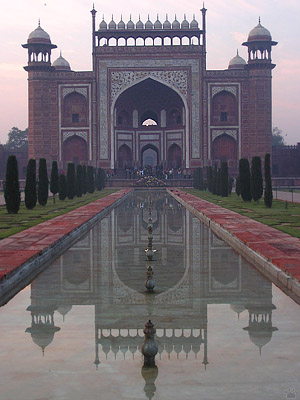
Gate, Taj Ganj. |
In addition to the mosque, there's its precise replica (jawab), constructed for symmetry. The entry ticket to Taj Ganj is one of the most expensive in India (US$17), but you can see it for free from across the river. |
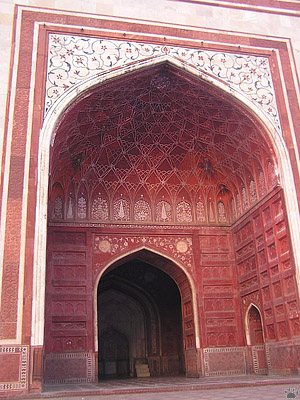
Gate, Taj Ganj. |
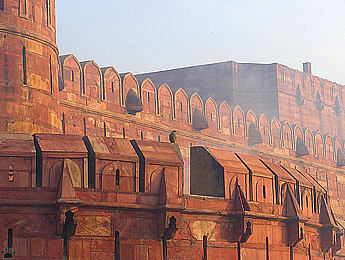
Lone monkey on the walls of Agra Fort. |
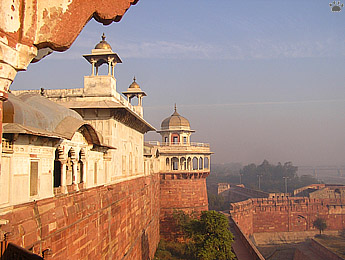
Khas Mahal and Musamman Burj, Agra Fort. |
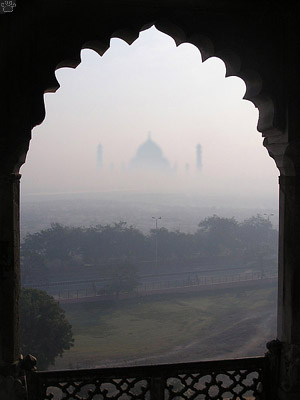
View of Taj Mahal from Khas Mahal Palace, Agra Fort. |
In 1658 coup, Shah Jahan was put under house arrest by his son Aurangzeb. He spent the rest of his life looking at Taj Mahal from Agra Fort, doing drugs and having sex with countless concubines. He died of aphrodisiac overdose in 1666, and is buried in Taj Mahal. |
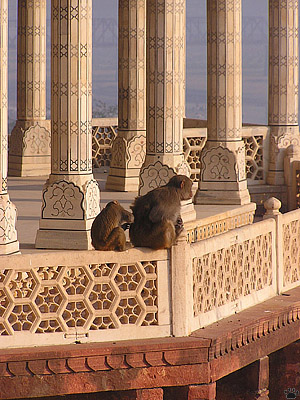
Rhesus macaques (Macaca mulatta) viewing Taj Mahal from Agra Fort. |
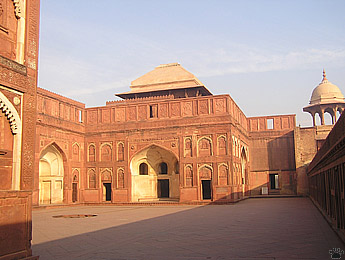
Diwan-i-Khas, Agra Fort. |
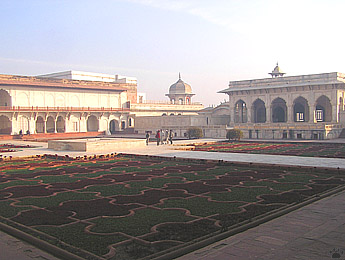
Anguri Bagh, a traditional Mughal garden, Agra Fort. |
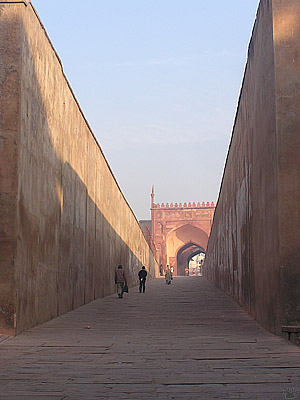
Entrance to Agra Fort. |
Agra Fort was founded by Akbar in 1565, but his descendants Jehangir, Shah Jahan and Aurangzeb kept adding buildings and ramparts. Much of the fort is closed to visitors for no apparent reason, but it's still worth seeing. |
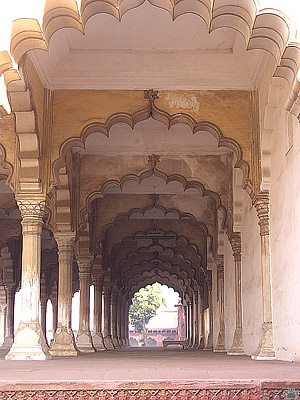
Mina Masjid, Agra Fort. |
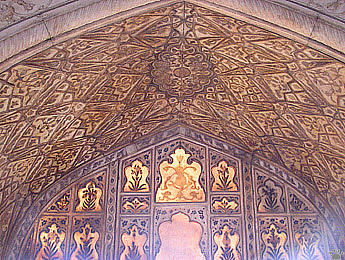 |
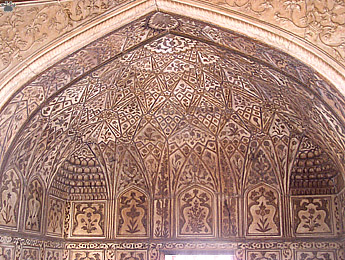 |
| Inside Nagina Masjid, Agra Fort. |
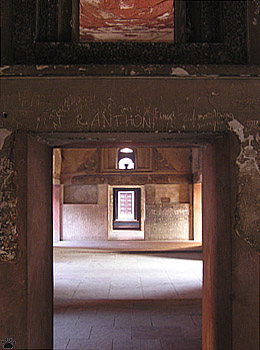
Inside Diwan-i-Am, Agra Fort. |
You just have to see Taj Mahal if you are lucky to visit India, even if only for two days.

Detail, Jehangir's Palace, Agra Fort.
But Agra is not India's most impressive city - those are in another state. Let's have a look. |
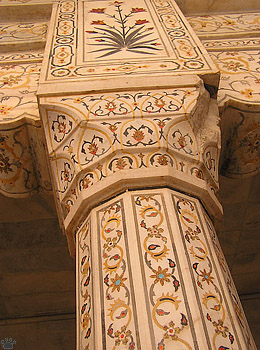
Detail of Nagina Masjid, Agra Fort. |
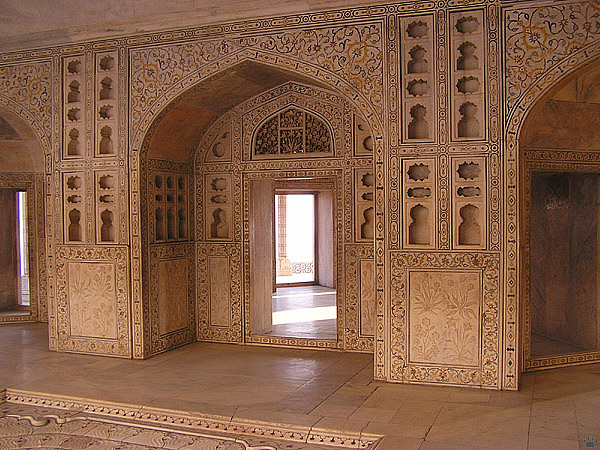
Nagina Masjid, Agra Fort.
|
Part 6: Rajasthan
Back to Part 4
Home
|